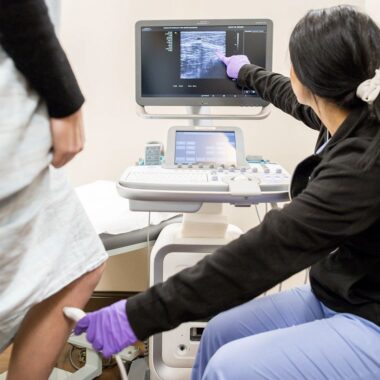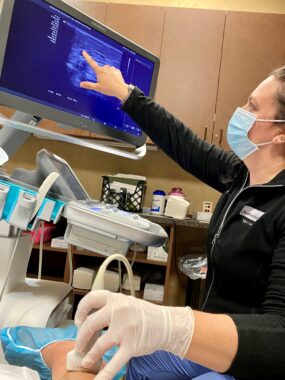If you have varicose veins, you might assume they’re just a cosmetic issue. However, these enlarged surface veins on your legs can indicate underlying dysfunction of the deeper vein system. Getting to the root cause of unsightly veins can ensure you get the care you need before vein disease progresses to more advanced stages.
What Is Chronic Vein Disease?
Vein insufficiency occurs due to vein dilation and poor valve function, leading to blood pooling in the legs and enlargement of superficial vein branches, which are termed varicose veins, reticular veins, and spider veins depending on the involved vein size. Around 25 million adults have chronic vein chronic venous insufficiency, in which veins don’t properly send blood back to the heart, and instead, reflux the blood down the leg.
Chronic vein disease causes changes in how blood flows through your veins and how the small blood vessels work, leading to inflammation and problems with the lining of the veins. Chronic venous congestion from venous insufficiency causes symptoms including leg pain, heaviness and swollen ankles. As the disease gets worse, it can even lead to nonhealing wounds.
Types of Chronic Vein Disease
Chronic vein disease can be grouped into three types: primary, secondary and congenital. Primary chronic venous insufficiency is the most common type of chronic venous insufficiency. It develops over time as people age and their veins get weaker and larger. Many people have a genetic predisposition to primary vein disease, but other contributing risk factors include:
- Being female
- Getting older
- High blood pressure
- Obesity
- Oral contraception use
- Pregnancy
- Sedentary lifestyle
Secondary vein disease is caused by damage to the vein wall, usually from deep vein thrombosis (DVT), a type of blood clot. Occasionally, secondary vein disease can be caused by trauma, such as broken bones. In addition to age, weight, sex and pregnancy, risk factors for secondary vein disease include:
- History of blood clots
- May-Thurner syndrome
- Prolonged standing
- Smoking
Around 30% of people with vein disease have secondary chronic venous insufficiency, which often progresses more quickly. Congenital vein disease is the least common type and is caused by genetic mutations.
Read More: Beneath the Surface: Venous Disease Is More Than Cosmetic
Symptoms of Chronic Vein Disease
For some people who have vein disease, the only noticeable symptom may be dilated blue, red or purple veins under the skin, which are termed spider or reticular veins depending on size. Because the visibility of these veins is affected by the amount of body fat surrounding the veins, you may have venous insufficiency and associated symptoms, but not have any visible veins. Symptoms usually affect your legs and can include:
- Heaviness, tiredness
- Aching, cramping, especially when you sleep
- Itching
- Burning pain
- Swelling
- Skin dryness, hyperpigmentation
Often, symptoms improve with leg elevation or rest. Symptoms may get worse when it’s hot outside or after standing or sitting for a long time. As the disease progresses, you may experience worsening symptoms including chronic leg swelling, changes in skin coloration, tightening of the lower leg tissues, and poorly healing wounds and blisters.
Chronic Vein Disease Treatment
If you have early-stage chronic vein disease, your treatment may be primarily cosmetic. But ruling out more serious issues behind your varicose veins is important. If no deeper problem is found, treatment options include:
- Endovenous laser therapy, or EVLT, which uses a tiny laser to close the largest refluxing superficial veins
- Sclerotherapy, which involves injecting a chemical solution to close the varicose vein or spider vein branches that remain after EVLT.
People who have secondary vein disease caused by DVT are more likely to develop pain, swelling and skin changes. Advanced and secondary vein disease may need treatment with other types of surgery. All patients will need to wear compression stockings after treatment as they heal.
Read More: Your Vein Treatment Timeline: What to Expect
Charlotte Radiology Can Treat Your Chronic Vein Disease
If you have varicose veins or symptoms of vein disease, it’s a good idea to see a vein specialist. Vein problems can get worse over time, so early diagnosis and treatment can improve your vein health and quality of life while also saving on healthcare costs. Charlotte Radiology vein specialists are here to help.



